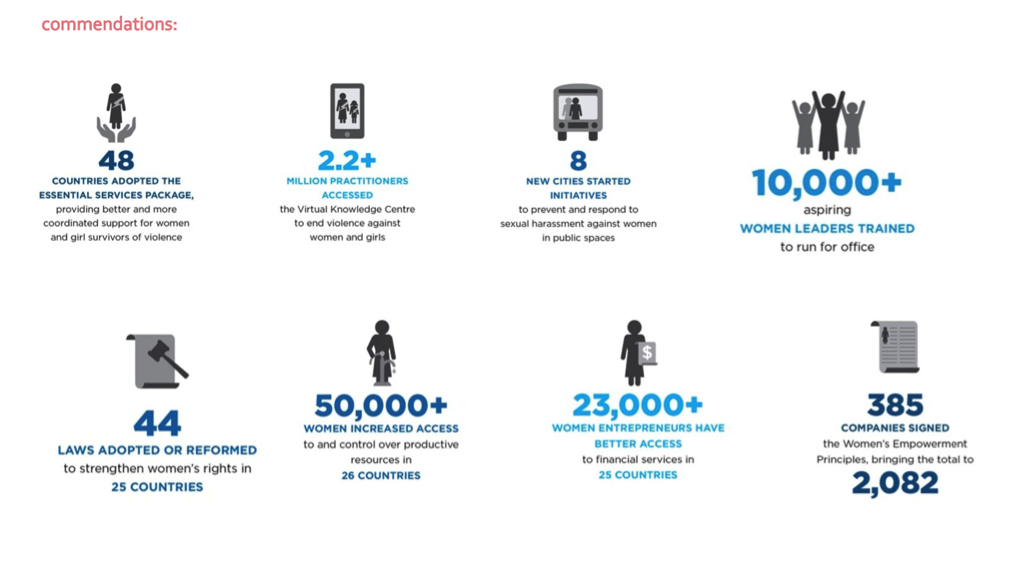|
By A. C. Ernanny Their function:
- Focuses exclusively on gender equality and women’s empowerment by supporting international political negotiations that formulate global standards for gender equality. It also helps the UN member states by providing expertise and financial support What they do: - Investing in women’s economic empowerment - Aiding in the fact that women’s leadership and political participation is poor - Ending violence against women - Aiding in women participation in all levels of peace processes and security efforts. - Including women in decision-making about the forms of assistance and protection they need through humanitarian action - Youth, next generations to come. - Ensure measures are taken so that public services respond to women’s needs and priorities. - Reach the sustainable objectives by 2030 which states to combat inequality amongst other aims - Take preventive measures against HIV and AIDS spread Criticism: The guardian 2015 report: The UN reports progress in female rights, but the pay gap, forced marriage and domestic violence persist - A global summit in a 1995 took place aiming to transform the lives of half of humanity - Equality, reproductive rights, maternal health, political representation, social repression, forced marriage, FGM, rape and domestic violence - The declaration – an agenda for change and a call to action – was signed by 189 countries. Twenty years on (2015), there have been improvements but...: - Abortion rights are still patchy - Violence against women – including rape as a weapon of war is prevalent - Proper economic equality still a distant dream. - Some 37,000 girls are forced into marriage every day. - More than 20o million women still have no access to modern methods of family planning.
0 Comments
Leave a Reply. |
Categories
All
Archives
June 2024
|

